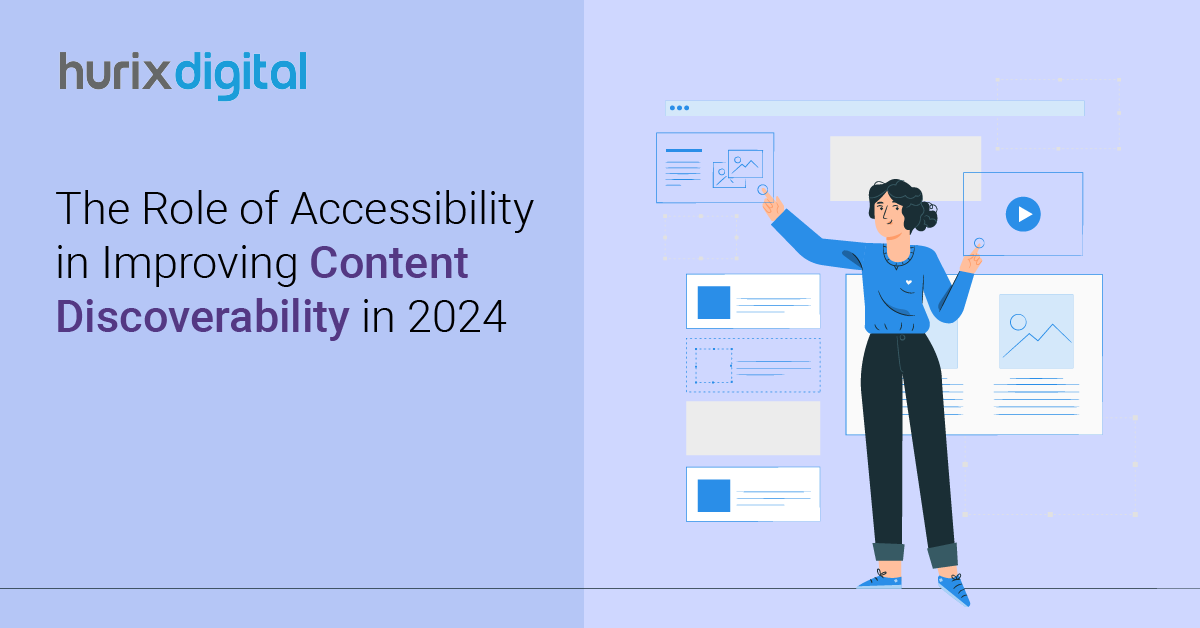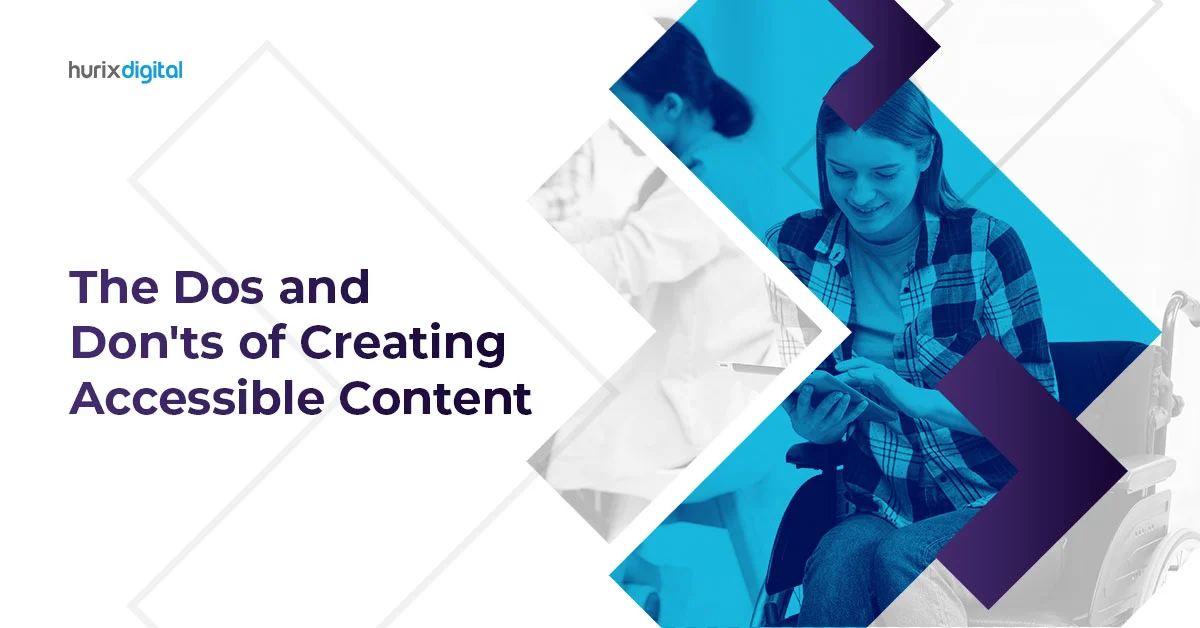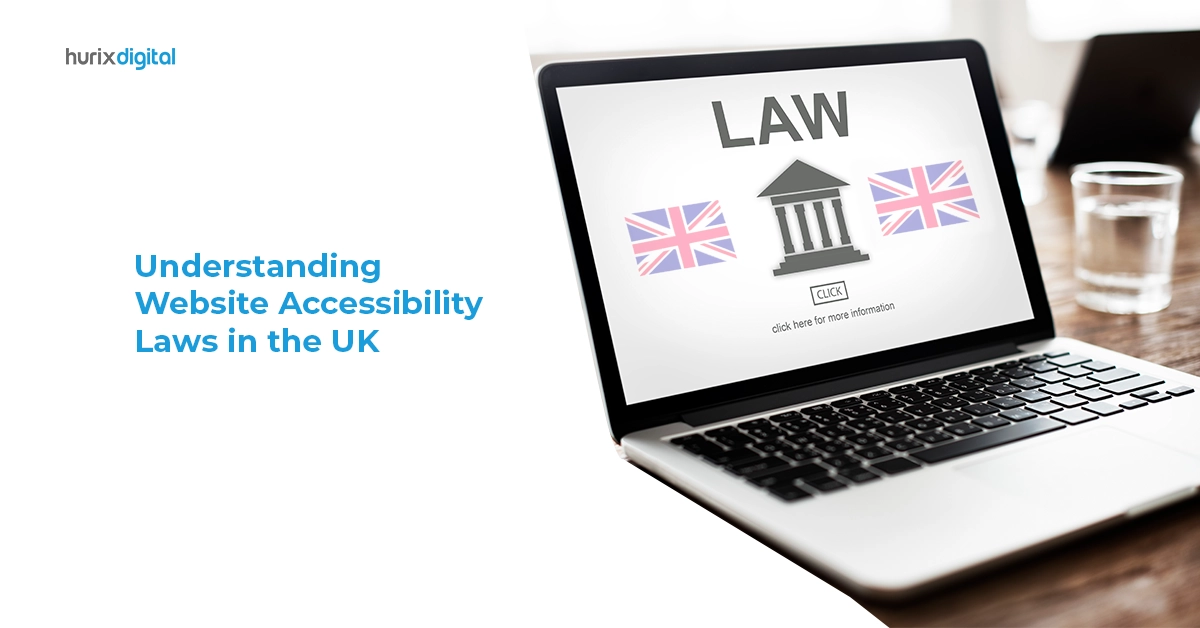
The Role of Accessibility in Improving Content Discoverability in 2025
Summarize with:
One of the main reasons why website accessibility is so crucial is the increasing number of people with impairments. Since one in four Americans has an impairment of some kind, a sizable percentage of the population cannot discover content if it is not accessible. Developing an accessible website gives these people equal access to the online community.
Enhancing the accessibility of your website’s content can be a major task. However, you can make quick, easy adjustments to make your content more accessible to users of all abilities.
This blog outlines the role of accessibility in improving content discoverability and provides expert tips for improved results. Read on!
Table of Contents:
- How Does Digital Accessibility Improve Content Discoverability?
- Expert Tips to Ensure Content Discoverability by All
- Summing Up
How Does Digital Accessibility Improve Content Discoverability?
In content discoverability, accessibility refers to the process of making digital content easily readable and accessible for all users, including those with impairments.
Here are the top benefits of web accessibility, which ensures the content is discoverable by all:
1. Improved User Experience
In addition to helping individuals with disabilities, accessibility features like keyboard navigation, alt text for pictures, and appropriate heading structures also make a website easier to use for everyone else.
You can establish a user-friendly website that appeals to a varied audience by making content accessible.
2. Enhanced Audience Discovery
Users with disabilities who depend on assistive technologies to access digital material are more likely to find and share accessible content.
Optimizing their content for accessibility can foster more interaction, boost traffic, and enhance brand awareness.
3. Amplify SEO Performance
Websites that are easily navigable are given preference in search results by search engines such as Google.
Businesses can enhance their SEO performance and increase the discoverability of their content by employing accessibility best practices, including semantic HTML markup, alternate language for pictures, and informative headers.
4. Legal Compliance and Risk Mitigation
Ensuring the accessibility of digital information is not just a recommended practice but is mandated by law in several jurisdictions.
It reduces the danger of legal action and guarantees compliance with accessibility standards like the Web Content Accessibility Guidelines (WCAG), which specify the requirements for accessible web content.
Also Read: What is Mobile App Accessibility? Know Its Meaning, Guidelines & Strategy!
Expert Tips to Ensure Content Discoverability by All
Online designers, developers, and content creators can utilize these web accessibility guidelines to create content that is completely accessible to all users.
1. Incorporate Verified Components for Accessibility
Include accessibility elements that have been tried and proven safe from the start of development to make your digital content more accessible.
The Web Content Accessibility Guidelines 3.0 have been updated to incorporate cutting-edge technology, including wearables, virtual and augmented reality, multimedia, and mobile accessibility.
The standards include various devices, tools, and potential content. They offer a framework for future electronic functions and show how to make current devices simpler and more user-friendly.
2. Prioritize Clarity While Content Curation
Making your content as accessible as possible is a matter of user experience, so it should be a top concern. How should you approach content and availability, however? A single aspect describes it all: clarity.
One method to guarantee clarity is to present information in an ordered manner instead of paying scant attention to usability and content organization. Another strategy to promote clarity is to offer a variety of content access options, given that individuals consume content in multiple formats.
Clarity in content creation demands planning and intention, but the payoff is material that gives your viewers a remarkable experience.
3. Provide Text Replacements for Non-Textual Content
Any visitor must be able to access and comprehend any content on your website. For this reason, text equivalents must be provided for any non-text information, including pictures, videos, and audio snippets.
Provide an option for individuals who are unable to see or hear the information to still understand it, such as by including a transcript for videos or alternate text characteristics, sometimes known as “alt text,” for digital photos.
4. Use Audio and Video Transcripts
Transcripts are an effective method for providing a broad audience with comprehensible digital material that is based on audio and video.
A transcript is audio and visual information in written format. Users with hearing difficulty find a simple transcript to be a good alternative to audio-only material because it solely contains auditory data, such as speech.
Descriptive transcripts are accessible to people with poor vision, deafblindness, and visual impairments, especially individuals who utilize screen reader software. They use text to express every nuance that would be experienced by viewing and hearing a video.
5. Adhere to the Hierarchical Heading
Throughout your content, use headers to make it easy to skim while retaining the introduction of new concepts. The header styles on your website have a purpose beyond aesthetics.
One of the main ways people with assistive devices navigate material is through the header levels. Thus, altering the heading arrangement will cause more than simply visual confusion. It also prolongs the time it takes for people with impairments to consume content.
The title of each page on your website needs to be properly formatted as Heading 1 (h1). Make your way along through the headers (h3, h4, etc.) in the content until you reach a fresh subject matter.
6. Include Infographics
Infographics are illustrations of easily understood and informative facts. Because they are in the format of images, they are also beneficial to the majority of those who like to post visual material on social networking sites.
With certain infographic tools, you can produce a professional-looking infographic without even having graphic design skills.
7. Explain Abbreviations and Acronyms
Always state words or phrases completely and include acronyms or abbreviations in brackets the primary time you use them in case there’s a possibility your audience doesn’t know what they are yet. You can then proceed to use the acronym or abbreviation for the subsequent mentions.
Also Read: Accessibility and Figures: Best Practices for Creating Accessible Content
Summing Up
It is possible to overlook certain essential components that play a crucial role in making your content accessible. Your website may contain a ton of graphics, headlines, and links, which would make it quite time-consuming to verify everything twice.
Well, if you are looking for digital solutions to enhance your content’s discoverability, you’re in luck. Hurix Digital provides end-to-end accessibility solutions to make your website discoverable by all.
From enhancing user experience to designing inclusive applications, get the most out of our accessibility services.
Book a demo call with us today!
Summarize with:

Vice President – Content Transformation at HurixDigital, based in Chennai. With nearly 20 years in digital content, he leads large-scale transformation and accessibility initiatives. A frequent presenter (e.g., London Book Fair 2025), Gokulnath drives AI-powered publishing solutions and inclusive content strategies for global clients
 A Space for Thoughtful
A Space for Thoughtful 


